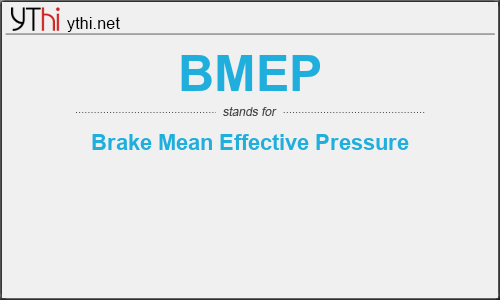What does BMEP mean? What is the full form of BMEP?
The full form of BMEP is Brake Mean Effective Pressure
Brake Mean Effective Pressure (BMEP) is another very effective yardstick for comparing the performance of an engine of a given type to another of the same type, and for evaluating the reasonableness of performance claims or requirements.
The definition of BMEP is: the average (mean) pressure which, IF imposed on the pistons uniformly from the top to the bottom of each power stroke, would produce the measured (brake) power output.
Please note that BMEP is purely theoretical and has NOTHING to do with ACTUAL CYLINDER PRESSURES. It is simply a tool to evaluate the efficiency of a given engine at producing torque from a given displacement.
By looking at equations 8-a and 8-b below, you can easily see that BMEP is simply the torque per cubic inch of displacement, multiplied by a constant. In fact, many talented people in the engine design and development business currently use torque-per-cubic inch (“torque ratio”) instead of BMEP, thereby avoiding that tedious multiplication process.
If you know the torque and displacement of an engine, a very practical way to calculate BMEP is:
BMEP (psi) = 150.8 x TORQUE (lb-ft) / DISPLACEMENT (ci)
(Equation 8-a, 4-Stroke Engine)
BMEP (psi) = 75.4 x TORQUE (lb-ft) / DISPLACEMENT (ci)
BMEP
means
Brake Mean Effective Pressure![]()
Translate Brake Mean Effective Pressure to other language.


Leave a Reply
You must be logged in to post a comment.